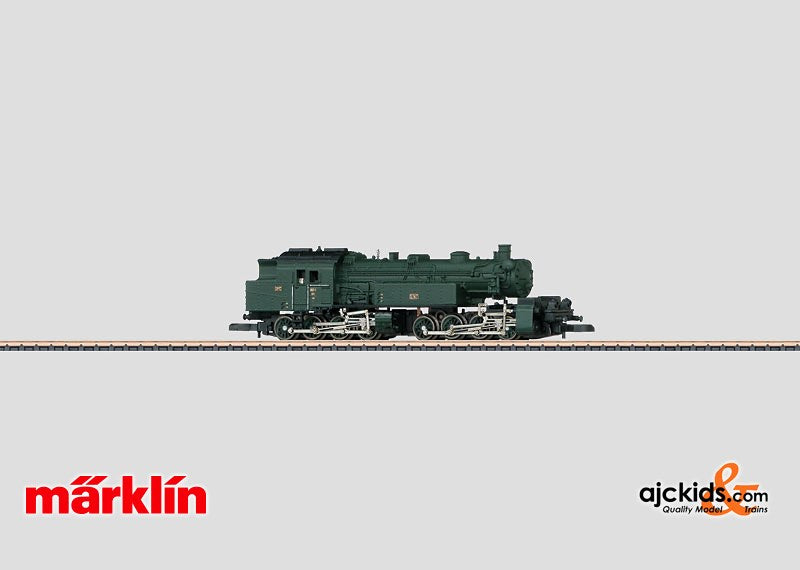Marklin 88293 - Tank Locomotive GVB class Gt 2x4/4
Prototype: Bavarian Group Administration (GVB) class Gt 2x4/4 heavy freight locomotive in a green/black paint scheme. Mallet design articulated locomotive with compound running gear consisting of high and low pressure cylinders, later designated the class 96. Use: pulling and pushing heavy freight trains on steeps grades such as the Schiefe Ebene, Spessartrampe, etc.
Model: This is a finely painted and imprinted unit with an articulated frame to enable it to negotiate sharp curves. All of the driving axles are powered. The dual headlights change over with the direction of travel and are warm white LEDs. The locomotive has finely detailed valve gear. It also has an imitation of brake shoes and rail clearance equipment.
The minimum radius for operation is 145 mm / 5-3/4".
Charlie's Tip: The locomotive comes in an exclusive wooden case with a numbered certificate of authenticity that mentions the anniversary "100 Years of the Gt 2x4/4 Steam Locomotive".
Length over the buffers 81 mm / 3-3/16".
One-time series.
Placed into service 100 years ago, it was viewed at the time as the largest, most powerful tank locomotive in the "Old World" and formed the crowning point of Mallet locomotive design in Europe the Bavarian Gt 2x4/4. In the area of the Bavarian State Railroad there were three steeply graded routes in particular (Laufach Heigenbrücken, the Frankenwald Grade Pressig-Rothenkirchen Steinbach a.W. Probstzella, and the Schiefe Ebene from Neuenmarkt-Wirsberg to Marktschorgast) that presented special problems in the first years of the 20th century as a result of considerably increasing train loads. The available locomotives were not up to the task of hauling arriving freight trains further on their own or as one unit. At that time for example, around 670 ton trains had to be hauled over the mountain with two pusher locomotives a state of affairs that could not be sustained economically. For that reason the locomotive builder Maffei developed the Gt 2x4/4 by 1913 with its 0-8-8-0 wheel arrangement. This locomotive had two groups of driving wheels, each with four coupled sets of driving wheels. The drive was transmitted to the rails by means of the third set of driving wheels. The wheel base measured a total of 12,200 mm / 40 feet 4 inches. The super-heated steam compound cylinder layout required flexible steam lines to the low pressure cylinders for the front group of driving wheels. The 15 units delivered in 1913/14 were considerably faster, and up to three times as powerful as the freight locomotive in use up to that time so that measurable savings were possible in terms of locomotives and crews. These new locomotives showed their full potential performance as early as their first test run: A 1,000 ton heavy freight train consisting of the train and a class Gt 2x4/4 pusher locomotive made it from Pressig-Rothenkirchen to Steinbach a.W. in a phenomenal 38 minutes instead of the usual 80 minutes. Taken as a whole the test runs resulted in reductions in running times of more than 50%. In 1922, the Gt 2x4/4 acquired serious competition in the form of the Prussian T 20 which could do the same performance with less weight at 30 tons. For that reason improvements to the design were made on subsequent orders of another ten units of the Gt 2x4/4. These locomotives were equipped with more evaporative heating surface, a larger cylinder diameter on the high pressure cylinders, and a short smoke stack (without an attachment). The coal bunker was increased in size by half a ton and the axle load was increased along with the service weight. All 25 units were taken on by the DRG with road numbers 96 001-025.
EAN/UPC: 4001883882932



